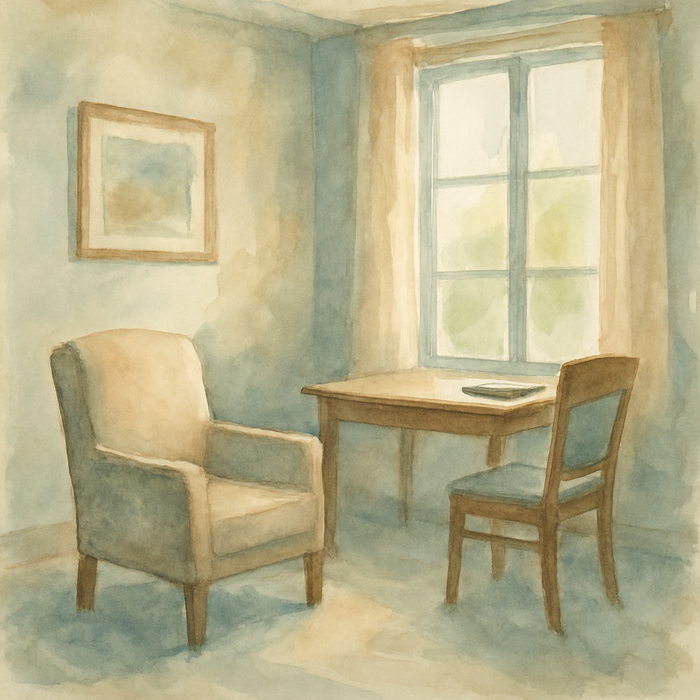I was recently discussing with a colleague some new offices that they are considering. Part of the scenario was that they are hoping to offer late evening, face to face sessions. This got me thinking about the potential dangers of working alone. So I put together some thoughts about a lone working policy.
This article outlines some considerations for a lone working policy suitable for psychotherapists in solo practice.
Purpose
To protect the safety and wellbeing of the psychotherapist when working alone with clients, whether in person, online, or by telephone, and to ensure reasonable steps are taken to manage risks associated with lone working.
Scope
This policy applies whenever a psychotherapist is:
- Working alone in a private consulting room
- Offering sessions online or by telephone without colleagues present
- Travelling to or from appointments alone
Risk Assessment
Psychotherapists should:
- Complete a lone working risk assessment at least annually and after any incident
- Assess client risk at referral or intake (for example, history of violence, substance misuse, high distress or crisis presentations, safeguarding issues)
- Decline or adapt work if identified risks are considered unmanageable
Safety Measures
Before Appointments
- Maintain an up-to-date diary of client appointments and expected end times
- Use a lone worker check-in system (for example, a trusted colleague or buddy who is contacted at the start and end of the day)
- Ensure a phone is charged and within reach; enable emergency SOS features
- Keep exits clear and accessible; avoid blocking doorways with furniture
During Appointments
- Arrange seating so both therapist and client have a clear exit route
- Keep a personal safety alarm accessible
- Maintain appropriate professional boundaries; stop or end sessions early if threatening behaviour occurs
- Trust your judgement; if you feel unsafe, pause or end the session
After Appointments
- Debrief with a supervisor or nominated colleague if any session raises safety concerns
- Record incidents factually in client notes and in an incident log
- Review and update safety measures following any incident
Communication and Escalation
- If the therapist does not check in after an appointment, the nominated contact should attempt to reach them and, if necessary, contact emergency services
- In an emergency, call 999 immediately and provide location details
Confidentiality
- Any sharing of client information for safety purposes should be minimal and proportionate (for example, sharing only initials and appointment times with a check-in contact)
Alarms
There are various alarm apps that can help in case of urgent need. For example, Hollie Guard is an app that can alert relevant people in case of emergency.
Training and Supervision
- Lone working risks and incidents could be a regular topic of supervision
- The therapist may wish to maintain training in de-escalation and personal safety where appropriate
Other Possibilities
You may wish to add:
- A “buddy system” rota with other local therapists
- Clear signage in your therapy space to deter unauthorised access when alone
Finishing up
I hope this is useful and wonder what thoughts you may have.
